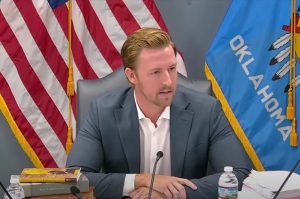When the Pro-Life Movement Was Mostly Liberal

There has been relatively little research by either journalists or academics on the history of pro-life activism in the United States.
Some of the books, like Wrath of Angels, are largely agenda-driven, written by individuals ideologically opposed to the pro-life movement. Other books that provide some history are personal testimonials. While these books are interesting, they often only provide a limited perspective on efforts to oppose abortion.
In 2014, Dr. and Mrs. John C. Willke published Abortion and the Pro-Life Movement: An Inside View, which is the first truly comprehensive history of the pro-life movement. Their book first explores the history of pro-life activism before Roe v. Wade and then devotes a chapter to every year after 1973.
This year, Daniel K. Williams, associate professor of history at the University of West Georgia, published Defenders of the Unborn: The Pro-Life Movement Before Roe v. Wade, a helpful augmentation to the Willkes' book. Williams's book makes many contributions to the history of the pro-life movement.
First, Defenders of the Unborn focuses primarily on pro-life activism prior to 1973 and the Supreme Court's Roe v. Wade decision. While the Willkes' book covers some of this history, Williams goes into great detail about pro-life activism in states that legalized abortion early, including New York and California.
Second, Williams's book does a nice job detailing some of the early internal debates within the modern pro-life movement. The early pro-life movement was politically and ideologically diverse; unsurprisingly, pro-lifers in different ideological camps advocated different strategies to protect the unborn. Williams does an especially fine job capturing these debates.
In the early chapters of the book, Williams nicely details the concerns of Catholic physicians in the early twentieth century who thought that acceptance of contraception might lead to the legalization of abortion. These physicians opposed medical doctors like Alan Guttmacher who supported greater access to both contraception and abortion. During the 1950s and 1960s, groups of mostly Catholic physicians were able to limit the number of therapeutic abortions performed in hospitals. Similarly, many Catholic lawyers and elected officials were able to offer effective opposition when the American Law Institute (ALI) adopted model legislation that would allow therapeutic abortion in certain cases. Overall, Catholic professionals were effective at blocking attempts to liberalize abortion laws until the mid-1960s.
In the mid-1960s, however, the Catholic Church began to lose its political influence. Two events in particular led to this.
The first was the Second Vatican Council, which led many Catholics to think that, in the political realm, social justice issues were more important than promoting morality. The second was the Supreme Court decision Griswold v. Connecticut, which struck down state bans on contraceptive sales.
Prior to Griswold, many Catholic bishops argued that laws restricting birth control were necessary to protect social morality. These arguments abruptly stopped after Griswold. Thus a significant number of Catholics concluded that if opposition to birth control should remain in the private realm, then opposition to abortion should remain private as well. Indeed, by the mid-1960s polls showed that a high percentage of Catholics supported abortion-law reform. Just two years later, in 1967, both California and Colorado liberalized their abortion laws — despite opposition from the Catholic hierarchy.
These changes made many pro-lifers realize in the late 1960s that they needed to change their approach. They had to increase their support among Catholics and find a way to gain supporters from other faith traditions. They made two important strategic changes.
First, pro-lifers began to use photos of aborted children more aggressively in their promotional materials. These photos shocked and outraged many Americans and converted many to the pro-life cause.
Second, many pro-lifers began to frame abortion as a human-rights issue, divorced from contraception and other issues of sexual morality. This allowed them to attract a number of political moderates and liberals. Indeed, many political liberals saw opposition to abortion as a human-rights issue, consistent with opposition to the death penalty and the Vietnam War. All of a sudden, the most visible pro-life spokespersons were no longer priests and philosophers but liberal antiwar activists, college students, and feminists.
This change in strategy paid off; the pro-life movement won a number of political battles in the early 1970s. In the spring of 1971, at least twenty-five state legislatures considered permissive abortion legislation, and pro-lifers succeeded in defeating every one of those bills. In 1972, ballot questions that would have expanded access to abortion were resoundingly defeated in Michigan and North Dakota. Later that year in New York, majorities of both the state house and state senate voted to repeal New York's 1970 law that legalized abortion until the second trimester. While Governor Nelson Rockefeller vetoed this 1972 bill, many hoped a new pro-life governor would sign similar legislation into law.
Pro-lifers also enjoyed success at the national level: President Nixon issued a pro-life statement, and pro-lifers prevented the Democratic Party from adopting a plank in its party platform that supported legal abortion. During the 1972 National Right to Life Convention, many pro-life leaders were optimistic and felt that victory was in sight.
Of course, the 1973 Roe v. Wade decision was a tremendous setback. Williams details how very few in the pro-life movement thought the Supreme Court would issue such a sweeping decision. Even though the focus of Williams's book is on the history of the pro-life movement prior to Roe v. Wade, the chapters that summarize the events after 1973 are some of the most interesting.
In the early 1970s, neither of the two major political parties was a natural home for the pro-life movement. Feminists who supported legal abortion were quickly gaining influence within the Democratic Party. Meanwhile, the Republican Party was home to many mainline Protestants and business interests who had little interest in the abortion issue. Since the early political battles over the legality of abortion took place at the state level, most congressmen and senators avoided the issue. The Roe v. Wade decision, however, nationalized abortion politics, and many congressmen and senators suddenly had to take a position on various human-life amendments.
A number of pro-life Democrats were reluctant to offer support for these efforts. Some thought amending the US Constitution was impractical. Others argued that government programs to support low-income pregnant women would be a better strategy for reducing the abortion rate.
Ronald Reagan's 1975 announcement that he supported the goals of a human-life amendment was a key turning point that pulled many pro-lifers into the Republican Party. Some pro-lifers, however, still sought to maintain a working relationship with the Democratic Party.
In 1974 a group of pro-life liberals, led by Marjory Mecklenburg, founded American Citizens Concerned for Life (ACCL) as a competitor to the National Right to Life Committee. ACCL focused not on enacting a human-life amendment that would overturn Roe v. Wade, but on supporting social legislation that would assist women facing crisis pregnancies. ACCL had a number of high-profile pro-life progressives on its board, but never attracted much grassroots support and ceased operations in the mid-1980s.
Over time, the two parties polarized over the abortion issue. Furthermore, during the 1980s and 1990s, many US Catholic bishops began to place a higher priority on sanctity-of-life issues than on welfare, health care, immigration, and other social justice issues. This also led an increasing number of pro-lifers to join the Republican Party.
Nonetheless, ideological tensions within the pro-life movement continue to exist to this day, even if they are somewhat less visible. Some progressives maintain that the abortion rate would be lower if pro-lifers focused less on legislation and more on welfare, health care, and other programs to support pregnant women. Williams describes how progressives continue to have some modest influence over the modern pro-life movement. For instance, The National Right to Life Committee lobbied against welfare reform efforts in 1996, fearing that proposed limits on welfare benefits would force some women with crisis pregnancies to seek abortions.
Overall, Daniel K. Williams's Defenders of the Unborn is a unique and important book. It fills a previously unmet need as the first book to chronicle the history of pro-life efforts prior to Roe v. Wade. The book gives well-deserved recognition to early pro-life activists like Father James McHugh, Father Paul Marx, Mildred Fay Jefferson, Ellen McCormack, and Marjory Mecklenburg. Perhaps more importantly, Williams nicely chronicles the internal debates that pro-lifers had in the years before and after the Roe v. Wade decision.
Indeed, Defenders of the Unborn demonstrates the important role that progressives have played in the pro-life movement. The pro-life movement is an exceptionally broad social cause with room for individuals from a wide range of ideological backgrounds. By highlighting this diversity, Williams has performed a very important service for his readers.
Originally posted at thepublicdiscourse.com.





























